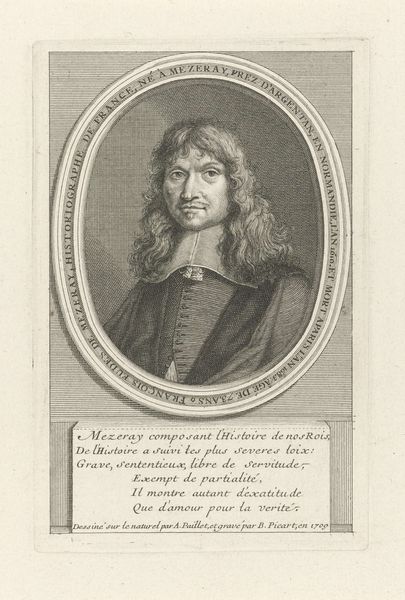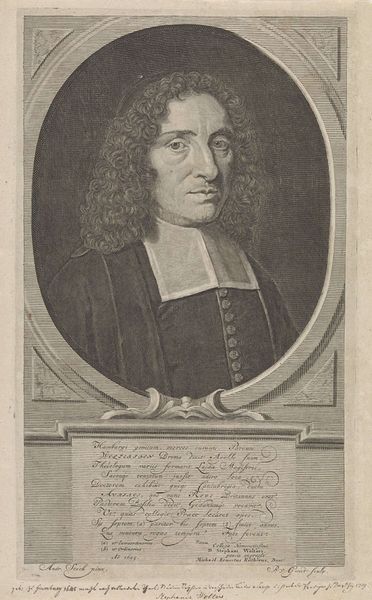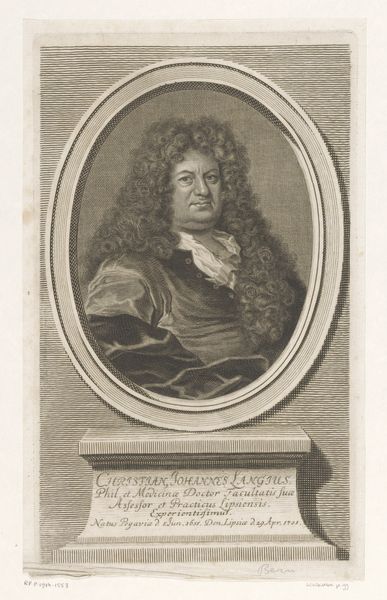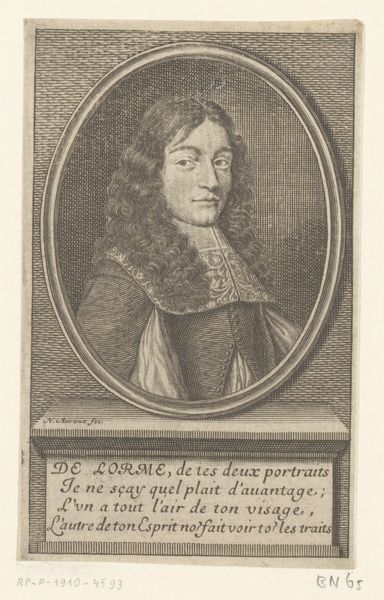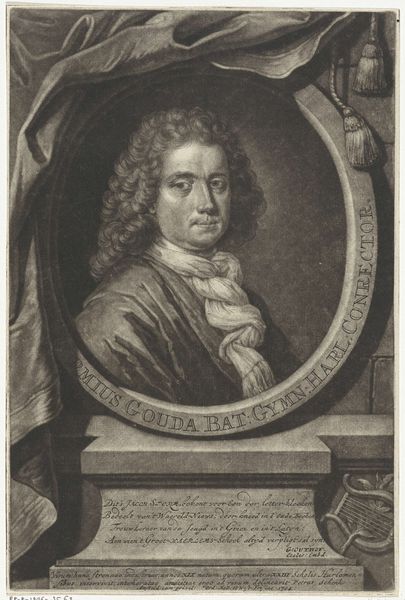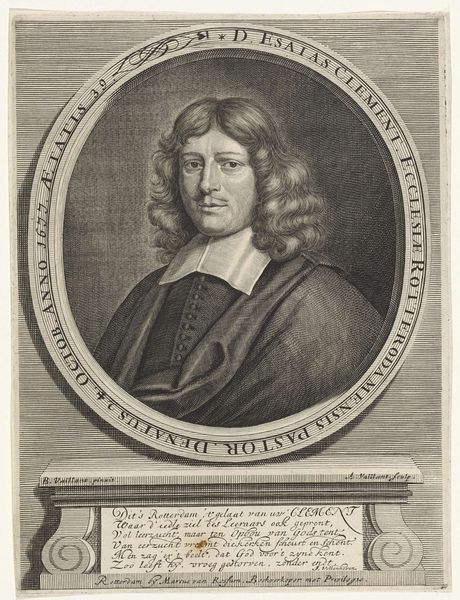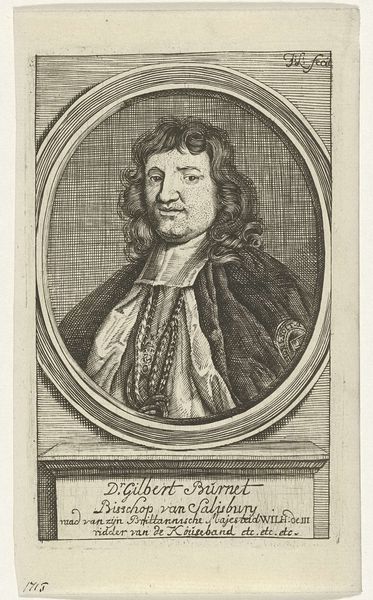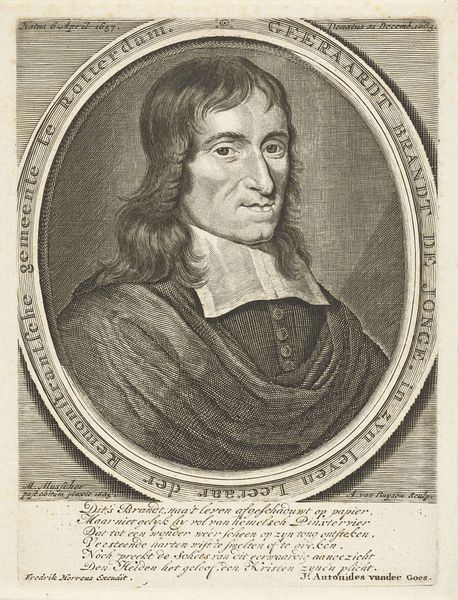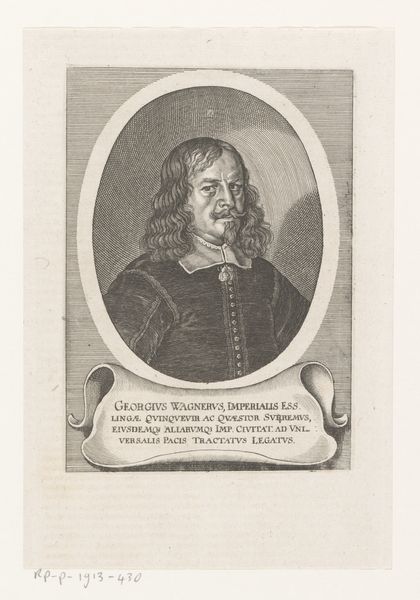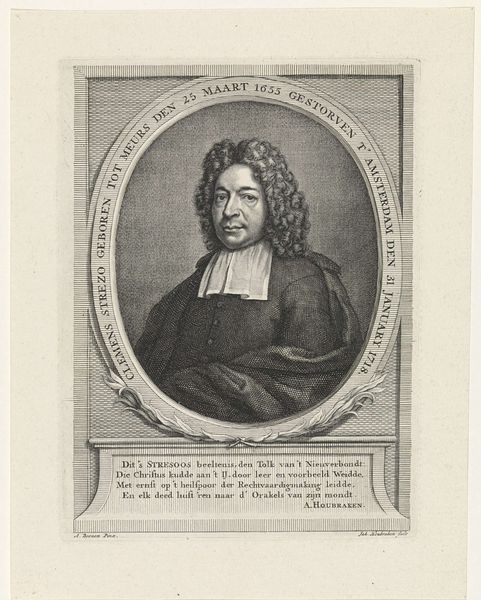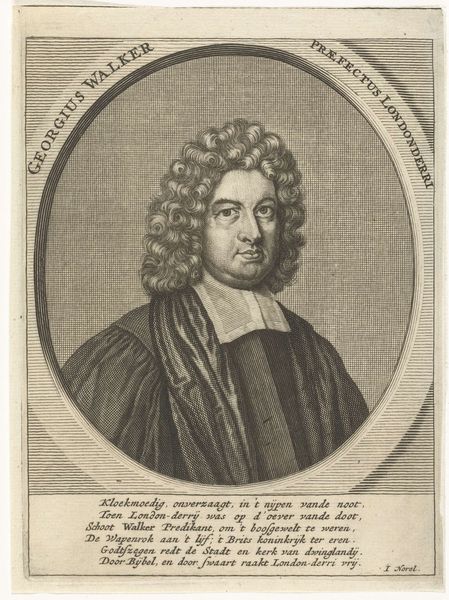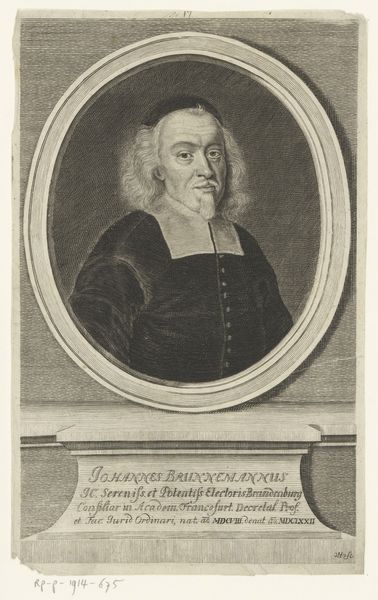
print, intaglio, engraving
#
portrait
#
baroque
# print
#
intaglio
#
line
#
history-painting
#
engraving
Dimensions: height 155 mm, width 99 mm
Copyright: Rijks Museum: Open Domain
Editor: We’re looking at a portrait of Henricus Schotanus à Sterringa, an engraving by Crispijn van de Passe the Younger, likely created sometime between 1604 and 1670. It has a somber mood, and the fine lines create incredible detail. What can you tell me about this work? Curator: This engraving speaks volumes about the status of portraiture and printmaking in the Dutch Golden Age. Consider the historical context. The rise of the merchant class fueled a demand for images – portraits, landscapes, and genre scenes – that reflected their aspirations. Prints, like this one, became a readily available and affordable medium, making art more accessible. What does this accessibility do, politically, for visual culture? Editor: I suppose it allows a broader audience to engage with images and the people they portray. Was the subject famous? Curator: Indeed. Representing Henricus Schotanus à Sterringa through an engraving suggests he held a prominent position in society. Note the inscription below the image. The text labels him as a Frisian, with the letters B. Fil., and LL. et mathefeos Studiofus. What social message would these cues imply? Editor: They seem to suggest Sterringa’s connections to law and mathematics. So he was probably someone of importance in those intellectual circles. The fact his portrait was reproduced as a print then speaks to that recognition, correct? Curator: Precisely! Printmaking enabled the circulation of his image and, by extension, his social standing. Van de Passe played a crucial role in disseminating such imagery, catering to a growing market for visual representations of the elite and influential. So, consider how prints functioned in shaping public perception during the period. Editor: This puts the engraving within a whole new historical framework! The subject, the artist and the very fact this is a print, provide insights into the political dynamics of the Dutch Golden Age. Thank you. Curator: My pleasure, considering art through its public and political functions deepens our insight into our shared cultural past.
Comments
No comments
Be the first to comment and join the conversation on the ultimate creative platform.
